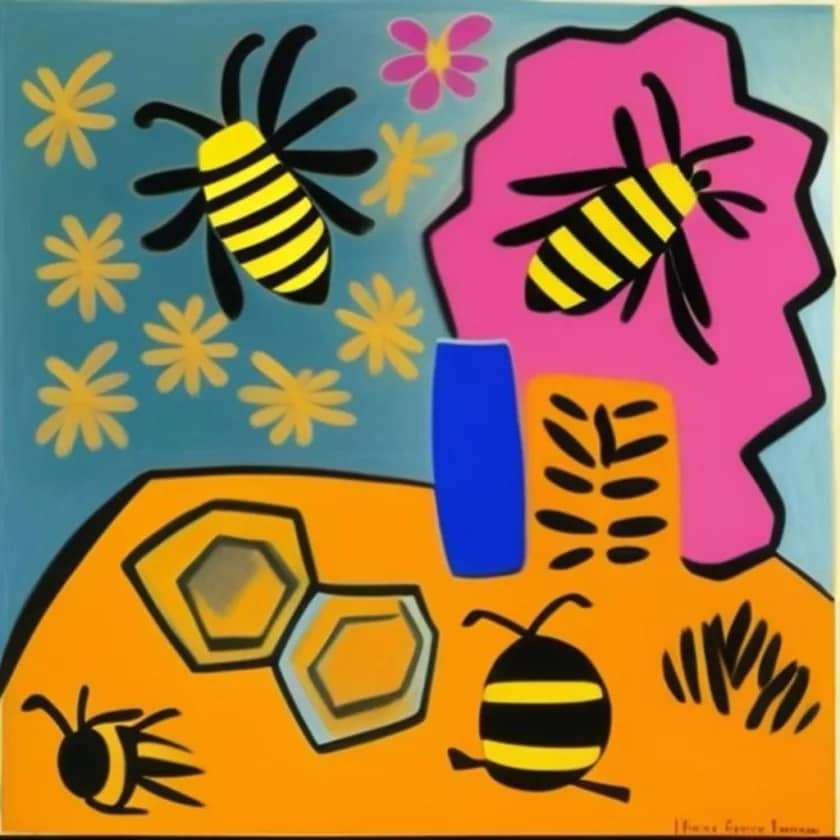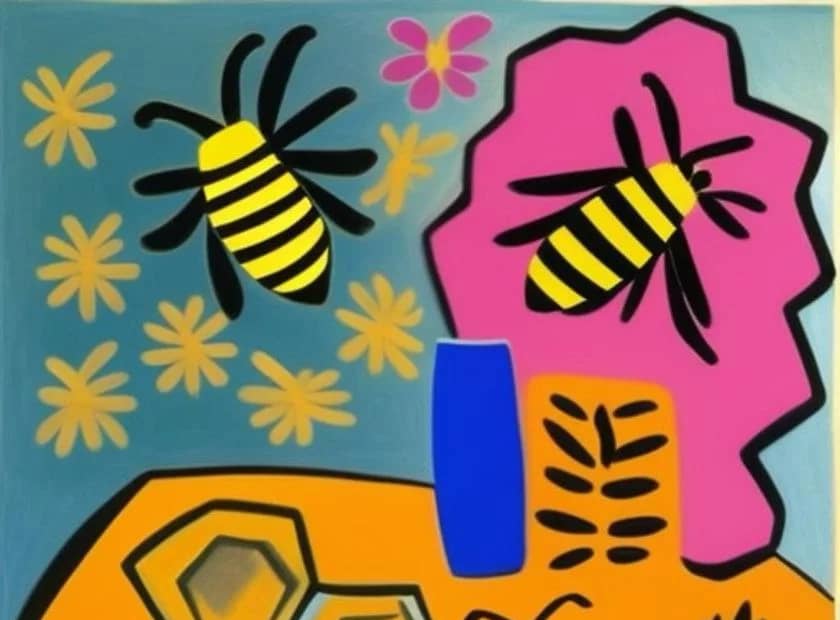About bees and honey
Here’s a surprising and interesting fact about bees and honey
Did you know that honey never spoils? Archaeologists have found pots of honey in ancient Egyptian tombs that are over 3,000 years old and still perfectly edible. Honey’s natural composition, with low water content and high acidity, creates an inhospitable environment for bacteria and microorganisms, allowing it to last indefinitely if stored properly.
What contributes to honey’s remarkable ability to resist spoiling
Acidity is one of the factors that contribute to honey’s remarkable ability to resist spoiling. Honey has a pH level that is typically around 3 to 4.5, which falls within the acidic range. This low pH creates an environment where most bacteria and microorganisms cannot thrive or reproduce. Additionally, honey has low water content, usually less than 18%, which further inhibits the growth of microorganisms because they require moisture to survive and multiply.
So, the combination of low water content and acidity helps preserve honey naturally and makes it an excellent long-lasting sweetener. It’s truly a remarkable aspect of this delicious and versatile food product!
Nutritional characteristics and potential health benefits
Honey is not only a sweet and tasty natural sweetener but also has several nutritional characteristics and potential health benefits:
- Nutritional Content: Honey is primarily composed of sugars, mainly glucose and fructose, but it also contains small amounts of vitamins, minerals, and antioxidants. These include vitamin C, calcium, potassium, iron, and various phytonutrients.
- Antioxidant Properties: Honey contains antioxidants such as flavonoids and phenolic compounds. These antioxidants can help combat oxidative stress and reduce the risk of chronic diseases.
- Wound Healing: Honey has been used for centuries as a topical treatment for wounds and burns. Its natural antibacterial properties, low water content, and acidity create an environment that promotes healing and reduces the risk of infection.
- Cough and Sore Throat Relief: Honey can provide relief from coughs and sore throats. It can soothe irritation and suppress coughs, making it a common ingredient in many over-the-counter cough syrups.
- Allergy Relief: Some people believe that consuming local honey may help alleviate seasonal allergies. The idea is that by ingesting small amounts of local pollen found in honey, the body may build up a tolerance to allergens. However, scientific evidence supporting this claim is limited.
- Energy Source: Honey is a source of quick energy due to its high sugar content. Athletes often use it as a natural energy gel during endurance activities.
- Gastrointestinal Benefits: Honey may have mild gastrointestinal benefits, such as soothing an upset stomach and alleviating symptoms of gastritis.
It’s important to note that while honey has these potential benefits, it should be consumed in moderation because of its high sugar content. Excessive honey consumption can contribute to weight gain and other health issues. Additionally, honey should not be given to infants under one year of age due to the risk of infant botulism.
When using honey for its potential health benefits, it’s best to choose raw or minimally processed honey, as these varieties retain more of their natural nutrients and antioxidants compared to highly processed versions. Always consult with a healthcare professional if you have specific health concerns or dietary restrictions.
A versatile ingredient that pairs well with other ingredients
Honey is a versatile ingredient that pairs well with a wide range of foods, beverages, and even seasonal plants. Here are some popular combinations:
- Tea: Honey is a classic addition to tea, whether it’s black, green, herbal, or chai. It adds sweetness and a touch of flavor that complements the tea’s profile.
- Yogurt: Drizzling honey over yogurt, along with some fresh fruit and nuts, makes for a delicious and healthy breakfast or snack.
- Oatmeal: Mixing honey into your morning oatmeal adds sweetness and a natural sweetener without the need for refined sugars.
- Toast: Honey can be spread on toast, bagels, or English muffins for a sweet and tasty topping. Combine it with peanut butter or cream cheese for added flavor.
- Fruits: Honey pairs wonderfully with a variety of fruits, such as apples, pears, bananas, and berries. It can be drizzled over fruit salads or used as a dip.
- Cheese: Honey and cheese make an excellent pairing. Try drizzling honey over a cheese platter, especially with soft cheeses like brie or goat cheese.
- Nuts: Honey complements the natural flavors of nuts, such as almonds, walnuts, and pecans. It’s often used in recipes for honey-glazed nuts.
- Baked Goods: Honey can be used as a natural sweetener in baking. It adds moisture and a unique flavor to cookies, cakes, and muffins.
- Salad Dressings: Honey is a key ingredient in many homemade salad dressings. It balances the acidity of vinegar or citrus and provides sweetness.
- Marinades: Honey can be used in marinades for meat, poultry, or tofu. It helps create a flavorful and caramelized exterior when grilled or roasted.
- Seasonal Plants: Depending on the region and season, honey can take on the flavors of local plants and flowers. For example, lavender honey has hints of lavender flavor, and orange blossom honey has a citrusy note. These variations can be used in recipes that complement their unique flavors.
- Beverages: Honey can sweeten and flavor beverages like cocktails, smoothies, and iced tea. It’s a common ingredient in hot toddies and mead, an alcoholic beverage made from fermented honey.
Remember that the type of honey you choose can also influence the flavor profile of your dishes. Experiment with different varieties of honey to discover the nuances of taste that each one offers. Whether you’re using it as a sweetener, a glaze, or a drizzle, honey can add depth and complexity to your culinary creations.

What is fermented honey
Fermented honey is a product resulting from the natural fermentation of honey when exposed to certain conditions. It typically occurs when the water content of honey increases, allowing yeast and other microorganisms to thrive and convert the sugars in honey into alcohol and carbon dioxide. The resulting product is known as “fermented honey” or “mead.”
Here’s a brief overview of the fermentation process of honey into mead:
- Yeast Introduction: Wild yeast present in the environment or from other sources can find its way into honey, or a specific yeast strain can be added deliberately. Yeast is responsible for consuming the sugars in honey and converting them into alcohol.
- Water Addition: Honey naturally has a low water content, which inhibits microbial growth. To ferment honey, additional water is often added to create an environment where yeast can thrive. The ratio of honey to water can vary, affecting the sweetness and alcohol content of the final product.
- Fermentation: As the yeast consumes the sugars in honey, it produces alcohol and carbon dioxide. This process can take several weeks to several months, depending on the desired outcome and fermentation conditions.
- Flavor Enhancements: Additional ingredients, such as fruits, spices, herbs, or other flavorings, can be added to the honey and water mixture to create a wide range of mead variations, each with its own unique flavor profile.
- Aging: After fermentation, mead is often aged for a period of time to allow the flavors to mature and develop. The aging process can range from several months to several years.
The final product can vary widely in taste, sweetness, and alcohol content, depending on the type of honey used, the yeast strain, and the fermentation process. Mead can be dry or sweet and may have various flavors, from fruity to spicy to floral.
Mead has a long history and is considered one of the oldest known alcoholic beverages, with roots in many cultures around the world. It has experienced a resurgence in popularity in recent years, with meaderies producing a wide array of mead styles, including traditional mead, melomel (fruit-infused mead), pyment (grape-infused mead), and cyser (apple-infused mead), among others.
If you’re interested in trying mead, you can find a variety of commercial meads at liquor stores or visit a meadery to explore different styles and flavors. Additionally, making your own mead at home is a popular hobby for those interested in craft beverages.
Albert Einstein is often attributed to a quote about the importance of bees to humanity
Albert Einstein is often attributed to a quote about the importance of bees to humanity, but there’s no concrete evidence that he actually said or wrote these exact words. However, the sentiment expressed in the quote aligns with Einstein’s concern for the environment and the interconnectedness of all living things. The quote is often paraphrased as:
“If the bee disappears from the surface of the Earth, man would have no more than four years to live.”
The quote suggests that the extinction of bees would have dire consequences for human life due to their role in pollinating plants, including many of the crops that make up a significant portion of the human diet. Without bees, the pollination of these plants would be severely compromised, leading to a potential collapse of ecosystems and food shortages.
While the quote is widely attributed to Einstein, there is no verifiable source directly linking these words to him. It is possible that the sentiment expressed in the quote reflects his concerns about the environment and the importance of biodiversity for the well-being of humanity. Bees, as pollinators, play a crucial role in maintaining the balance of ecosystems and supporting agricultural production.
Without bees no honey
Source OpenAI’s chatGPT Language Models, Dalle, AI trot and Fleeky
images Picsart and MIB
Invest in your future
Take time to learn
Embark on your journey in affiliate marketing and website creation alongside an incredible community and myself. Invest in your future by dedicating time to learn and earn. Take all the time you need to master the basics before aiming higher. Give it a try and sign up for free. You won't regret it! Discover the possibilities for yourself...


